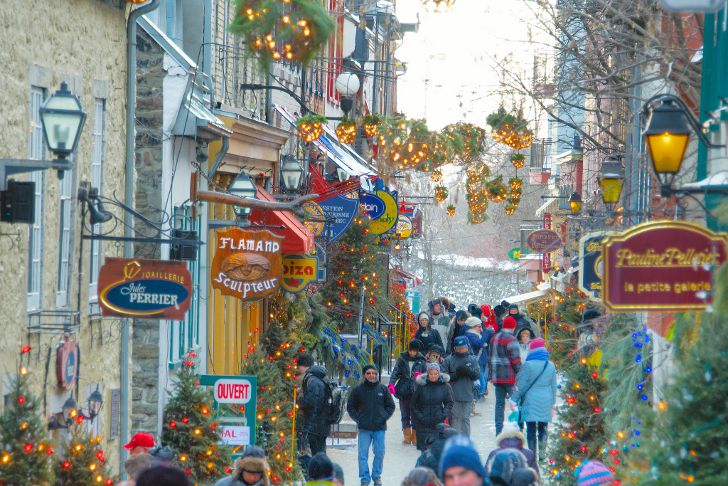The first Quebec Winter Carnival was held in 1894. Quebeckers intended to make it an annual event that would warm up their hearts during the cold season, but the festival was held sporadically for more than 50 years, largely due to two World Wars and the Great Depression.
The first official edition of the Quebec Winter Carnival took place in 1955, and the carnival has been held uninterruptedly ever since. That year the festival’s mascot made his first appearance. The mascot’s name is Bonhomme, it is a large snowman sporting a red cap and a ceinture fléchée, a type of colorful sash which was part of the French-Canadian costume in the 19th century.
Bonhomme is the castle lord of the Ice Palace and the official ambassador of the festivities. The Ice Palace is erected opposite to Parliament Building at Place de l’Assemblée-Nationale, atop Parliament Hill.
The carnival kicks off with a ceremony during which the city mayor hands over symbolic keys to the city to Bonhomme. The program of the Quebec Winter Carnival is very rich and diverse, it features over 200 activities for people of all ages. They include daytime and nighttime parades, numerous public and private parties, a spectacular masquerade ball, outdoor sport events, free public banquets, snow sculpture contests, a sleigh race on the Plains of Abraham, an ice canoe race on the St. Lawrence river, and more.
Nighttime parades are among the carnival’s main highlights. The Quebec Winter Carnival hosts two major night parades, one takes place in the borough of Charlesbourg and the other is held in Quebec’s Upper Town (Old City). Both parades feature impressive floats, marching bands, and dance troupes.
During the festival, most commercial streets of Quebec City are decorated with Christmas lights, wreaths, and other holiday decorations. Numerous stalls and kiosks sell traditional dishes and treats such as poutine, pea soup, baked beans, meat pies (tourtières), maple desserts, molasses treats, and more. The most popular hot drink is caribou, a sweet alcoholic beverage composed of red wine, whiskey or other hard liquor, and sugar or maple syrup.
To attend most events, one should buy the Bonhomme effigy tag that grants admission to the festival. However, there are some free events outside the main site.

Photo by Jamie McCaffrey




